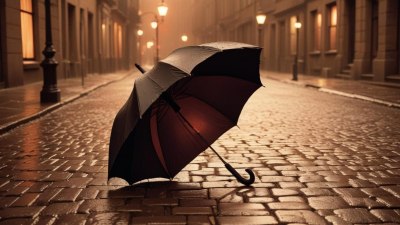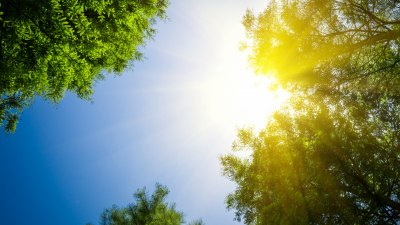Why Umbrellas Should Come With a Wind-Rage Warning Label
Explore the reasons why umbrellas need wind-rage warning labels for better safety and usage.

This image was created with the assistance of Freepik
Umbrellas are a common sight, seen sheltering people from rain and sun alike. However, their seemingly mundane utility belies a darker side when conditions become windy. A moderate gust can turn an innocuous umbrella into a weapon of chaos, leading to injuries, property damage, and sheer frustration. As this phenomenon is becoming more prevalent with unpredictable weather patterns, the idea of adding a wind-rage warning label to umbrellas seems more pertinent than ever.
In this article, we'll delve deep into why it would be beneficial for umbrella manufacturers to include such a label, the mechanics of how wind affects umbrellas, and anecdotal evidence highlighting the need for consumer awareness. By the end, you will likely agree that a small label could potentially save consumers from unnecessary injury and embarrassment, much like warning labels on other seemingly benign items.
The biomechanics of wind and umbrellas
When discussing umbrellas, it’s essential to understand the physics involved. An umbrella is a lightweight structure comprising a canopy, frame, and handle that function primarily to shield users from the elements. However, the very design that protects users also makes them susceptible to the unpredictable nature of wind. Moderate to high winds create a pressure differential across the surface of an umbrella, which can cause the canopy to invert or even break the frame. When inverted, an umbrella becomes much less effective at protecting its user from rain but highly dangerous as its frame becomes an irregular, flailing object that can strike others nearby.
Research indicates that winds above 15 mph (24 km/h) can lead to structural failure in typical consumer-grade umbrellas. High-quality designs and mechanisms can mitigate these effects, but they are not immune. Some umbrellas can sustain winds up to 30 mph (48 km/h), yet few consumers are aware of the specific capabilities of their umbrella. Therefore, a wind-rage warning label could inform users about the umbrella's limits and encourage them to avoid using it in inclement weather.
Anecdotal evidence of umbrella mishaps
Across cities worldwide, numerous stories exist of umbrellas wreaking havoc during windy weather. A common illustration is the occurrence of outdoor dining establishments being forced to cancel reservations due to wayward umbrellas hurtling towards customers. These “wind-rage incidents” can lead to injuries ranging from superficial cuts to more severe accidents such as concussions or fractures.
Take, for example, the case of Roger, a resident of San Francisco. One day, as he ambled through the Golden Gate Park, a sudden gust lifted his umbrella and sent it spiraling toward an unwitting woman seated at an outdoor cafe. The woman was left with a nasty bump and bruises, whereas Roger was left terrified—certainly not how he anticipated spending his Saturday afternoon. Instances like these are frequent, yet they remain underreported due to their trivialized nature. This leads to a lack of awareness about the inherent danger present when using umbrellas in windy conditions.
The need for consumer awareness
Consumer awareness regarding the limitations and dangers associated with umbrellas is low. While most people recognize that using an umbrella during heavy rain comes with its own set of challenges, the risks associated with windy conditions often fall under the radar. A wind-rage warning label could serve as an essential reminder to heed local forecasts before venturing out with an umbrella.
Safety labels are commonplace in various industries; for instance, kitchen appliances often come with advisories, and office furniture has warnings about load capacities. Yet, umbrellas remain largely unregulated. Implementing a warning label could promptly inform users of the limitations of their umbrella, urging them to either seek shelter or utilize a more rugged alternative during unpredictable weather.
Examples from other industries
Other industries have set a precedent for warning labels that address consumer safety. For example, chainsaws come equipped with explicit warnings to ensure users wear protective gear and handle them with care. Similarly, bicycle helmets often feature guidance on when to replace the item after impact. We must advocate for similar caution in other commonplace items like umbrellas. A simple and straightforward wind-rage warning label could drastically increase the safety of umbrella usage.
Moreover, many sporting equipment brands have put instructions on how to store items under adverse conditions. Such guidelines highlight the importance of social responsibility in consumer products. If manufacturers of umbrellas took similar initiative, it would enhance accountability, encouraging companies to produce umbrellas that withstand harsher environmental conditions while also enhancing public safety.
Creating a standardized warning label
There are several aspects to consider when designing a wind-rage warning label. First, clarity is essential; the label must communicate the dangers posed by winds effectively. A simple infographic could visualize the wind speed limits and suggest alternative protection methods. Additionally, the label could indicate specific usage guidance, such as “Do not use in winds exceeding 15 mph” alongside a stylized illustration.
Moreover, the label's location must be strategic to ensure visibility without detracting from the umbrella's aesthetic appeal. Ideally, the warning label should be printed or stitched on the canopy or stored within the handle, allowing users to refer to it easily while in use. Current consumers lean toward fashionable products, and balancing style with safety is achievable through thoughtful design.
Potential pushback and counterarguments
Despite the evident necessity, we should acknowledge the potential pushback regarding the addition of a wind-rage warning label. Critics might argue that increased regulations could lead to inflated prices or simpler designs. However, it’s essential to weigh cost against the potential for harm. The temporary frustration experienced due to an umbrella mishap can lead to long-lasting repercussions for victims.
Additionally, there’s the perspective that consumers should already be aware of the risks associated with using a flimsy umbrella in windy conditions. While this assumption might hold for some, it often fails to recognize the inherent unpredictability of the weather. Wind speeds can change rapidly, and caution should not depend solely on individual awareness; it should be a shared responsibility between manufacturers and consumers.
The future of umbrella safety
As weather patterns become increasingly volatile, with climate change contributing to unpredictable storms, it’s likely that we will see more cases of wind-rage incidents. In that light, the proposal for a wind-rage warning label is not merely a whimsical idea but a necessary step toward consumer safety. The future trends in umbrella manufacturing may lean toward more innovative designs and materials that naturally mitigate these issues, but until then, awareness and education are critical.
Advocacy groups can play a role in influencing legislation or at the very least pushing for consumer education programs in local communities and retailers. By creating buzz around this critical issue, we can protect countless lives and promote safer practices in the use of common items like the umbrella.
In conclusion, the necessity for a wind-rage warning label on umbrellas stems from the prevalent dangers associated with their usage in adverse weather conditions. By acknowledging the potential risks and minimizing harm through clear communication, manufacturers can take an essential step toward increased safety in everyday life. We do not merely want to protect ourselves from rain; we also want to safeguard our fellow citizens from befouling a shared outside experience with an unexpectedly dangerous umbrella. As consumers become more conscious about safety, it’s time for manufacturers to adapt their designs and provide ample warnings to ensure the utility of umbrellas is not met with unnecessary risks.











